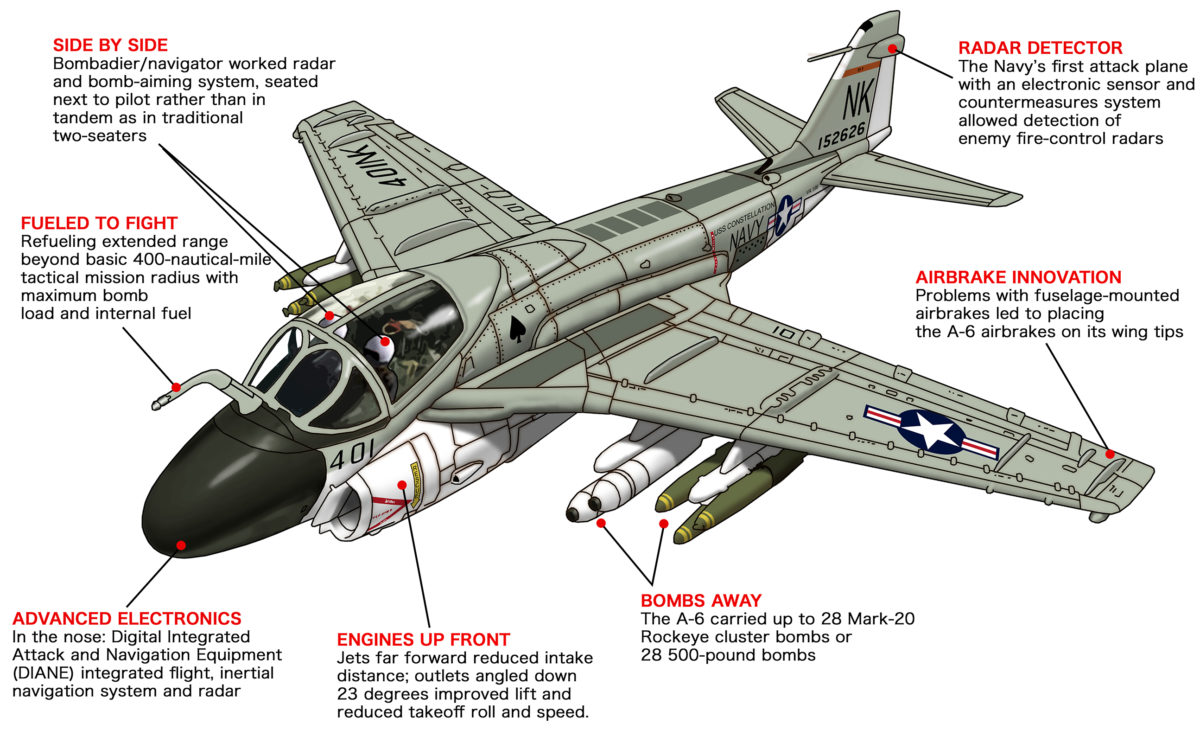A-6E Intruder
Crew: 2 (pilot, bombardier/navigator)
Wingspan: 53 ft.
Length: 54 Ft. 9 in.
Height: 16 ft. 2 in.
Max. Takeoff Weight: 58,636 lbs.
Max. Speed: 563 knots
Power: 2x Pratt & Whitney J-52P-6 turbojets with 9,300 lbs. of thrust each
Armament: Max. Bomb Load 18,000 lbs. (including up to 4 AGM-12 Bullpup ASMs) or 4 AGM-45 Shrike for SAM suppression missions
Range with Max. Bomb Load & Internal Fuel: 930 nautical miles
Tactical Mission Radius: approximately 400 nautical miles
The Grumman A-6 Intruder, developed in the late 1950s as a long-range all-weather nuclear strike aircraft, arrived in Southeast Asia in June 1965 and notched a number of firsts in Vietnam:
The Navy’s first attack plane able to penetrate deep into North Vietnam at night.
First Navy attack aircraft equipped with an electronic sensor and countermeasures system, enabling it to detect North Vietnamese fire-control radars.
First Navy attacker that could launch the AGM-12 Bullpup guided air-to-surface missile (ASM).
The A-6 was also the first U.S. naval aircraft equipped with a ground-tracking radar and computerized bomb-aiming system. The Digital Integrated Attack and Navigation Equipment (DIANE), integrated the flight, inertial navigation system and radar inputs to provide a target solution via cockpit cathode ray tube display, which included directional and terrain clearance information. DIANE enabled the Intruder to deliver its ordnance accurately in total darkness and all but the very worst weather conditions.
After the multitasking A-3 bomber, the Intruder was the second-largest carrier plane in Vietnam.
The A-6 accounted for just 20 percent of the operational combat sorties, but dropped nearly half of the bombs in Vietnam.
The A-6B also played a role in surface-to-air-missile suppression, conducting “Iron Hand” missions from 1967 onward.

this article first appeared in vietnam magazine
Facebook: @VietnamMag | Twitter: @VietnamMag





